Ingredients
Scrap paper |
Bowl | ||
|
| ||
| Jay cloths |  | Chopping boards or other pieces of wood. |
Instructions
Paper is made up of fibres from wood, or vegetable products. These fibres are arranged at random, in sheets with other additives, depending on the paper.
To recycle paper, the first thing you have to do is separate out these fibres. The fibres are held together by weak bonds which will be disrupted if water gets between the fibres. So if you make the paper wet, you just have to mechanically pull them apart. An easy way to do this is to put wet paper in a blender or food processor, and keep blending with water until you get a nice smooth paste.
 | 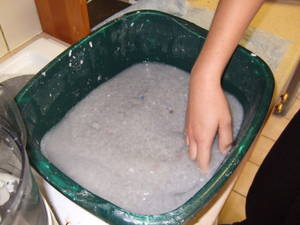 |
| Blend the paper to form a paste | Then dilute the paste to form a slurry |
This process will tend to break the paper fibres, making them shorter. Each time you recycle paper, the fibres get weaker. This limits the number of times that you can recycle paper. Although, as toilet paper doesn't need to be very strong, and its subsequent recycling opportunities are limited, it is a major final use of paper.
Once you have a paste of paper fibres suspended in water, you want to dilute the mixture a little, to make a thin slurry.
Now you want to extract a sheet of paper fibres. To do this, you will need a filter which will support the paper. The best thing for this is a fine metal mesh with holes around about 1mm across; sometimes you find these in frying splatter guards. If you don't have anything appropriate, you can make your own filter by stretching an old pair of tights across a wire coat hanger.
Then put the filter under the surface of the liquid, and gently pull it upwards to collect a layer of fibres on the surface. Lift it out of the liquid, and wait for the excess water to drain off.
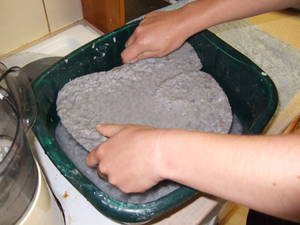 | 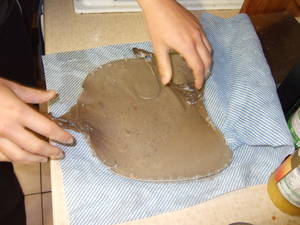 |
| Straining the slurry onto the mesh made from tights | Depositing the paper onto a jay cloth |
You now have a layer of very wet paper fibres which they need drying out. A good way to do this is to transfer the fibres onto a jay cloth, and then fold the other half of the cloth onto the paper. This provides a nice smooth surface, and allows the water to drain through. Now you want to squash the water out, so put the jay cloth between two pieces of wood, and add a lot of weight to the top piece of wood, to squash the water out (I just stood on it).
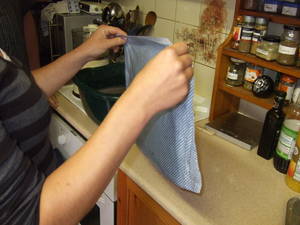 |  |
| Move the paper by just picking up the folded jay cloth | Press the paper by squashing it between two flat surfaces. You could use a worktop and a chopping board, but I had a lot of old plywood lying around... |
Now just peel off the top layer of jay cloth, and leave to dry. When it is a bit drier and stronger, you can take it off the jay cloth and leave it to dry on a surface.
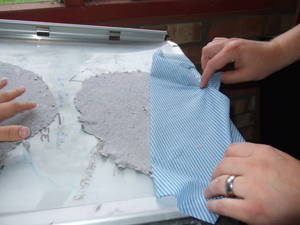 | 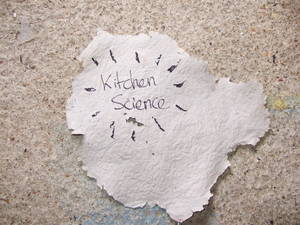 |
| Put the paper onto something overnight to dry out. | Use your paper for something useful. |
Use your paper for something interesting. You can investigate starting off with different types of paper (newspaper, printer paper, letter paper) and see if you produce different types of recycled paper.
How does commercial paper recycling differ?
The biggest difference is, of course, in scale. Also, the processes are continuous, using conveyor belts and rollers, rather than tights and bits of wood. The other major difference is that there is normally an attempt to remove ink from the paper using bleaches, and other chemicals.
- Previous Falling Mugs
- Next Dropping Eggs

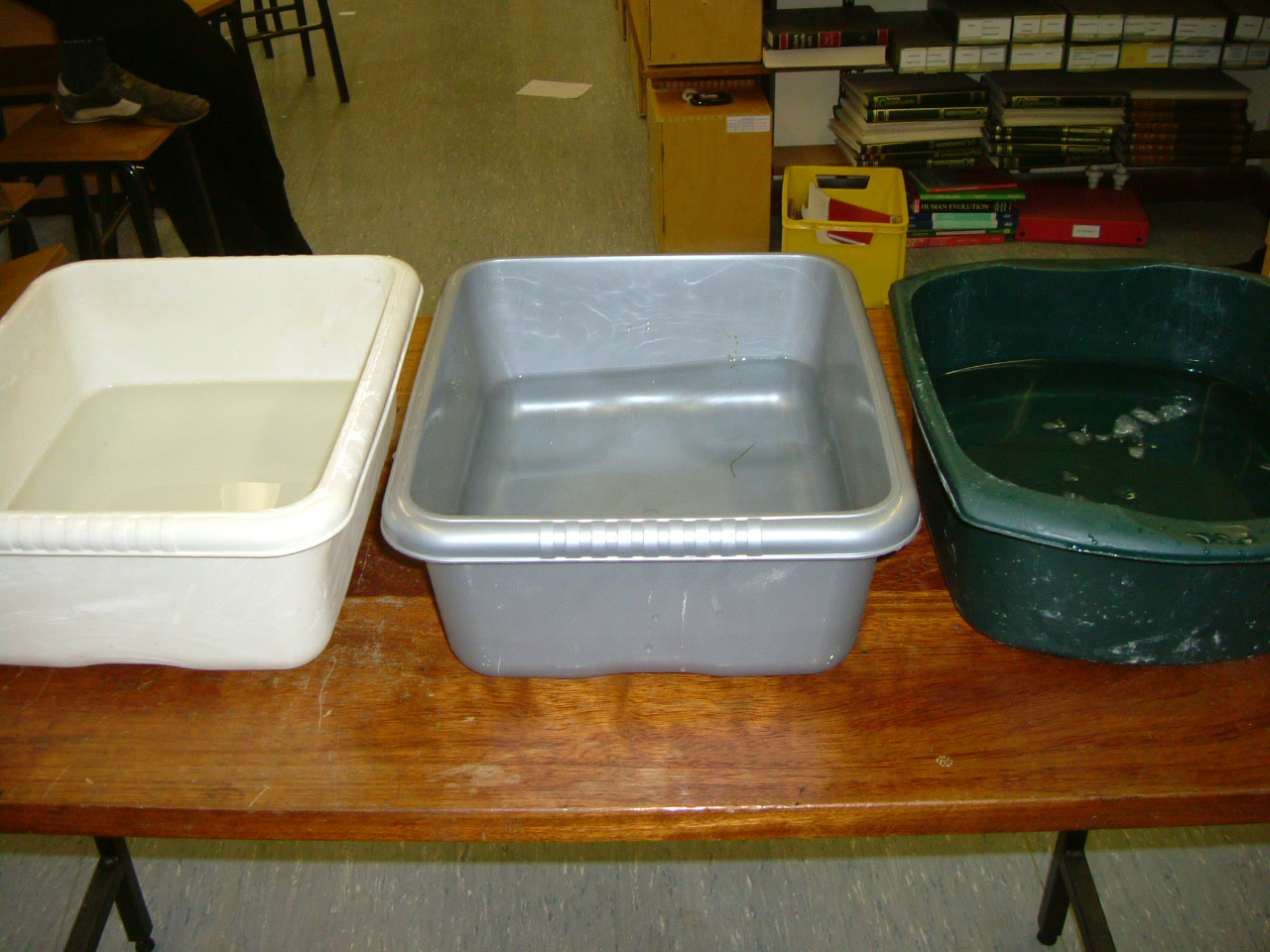
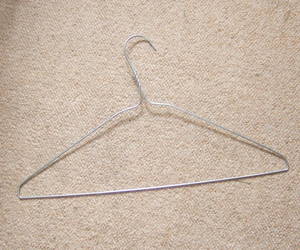 Tights and a wire coat hanger, or some fine metal mesh
Tights and a wire coat hanger, or some fine metal mesh








Comments
Add a comment